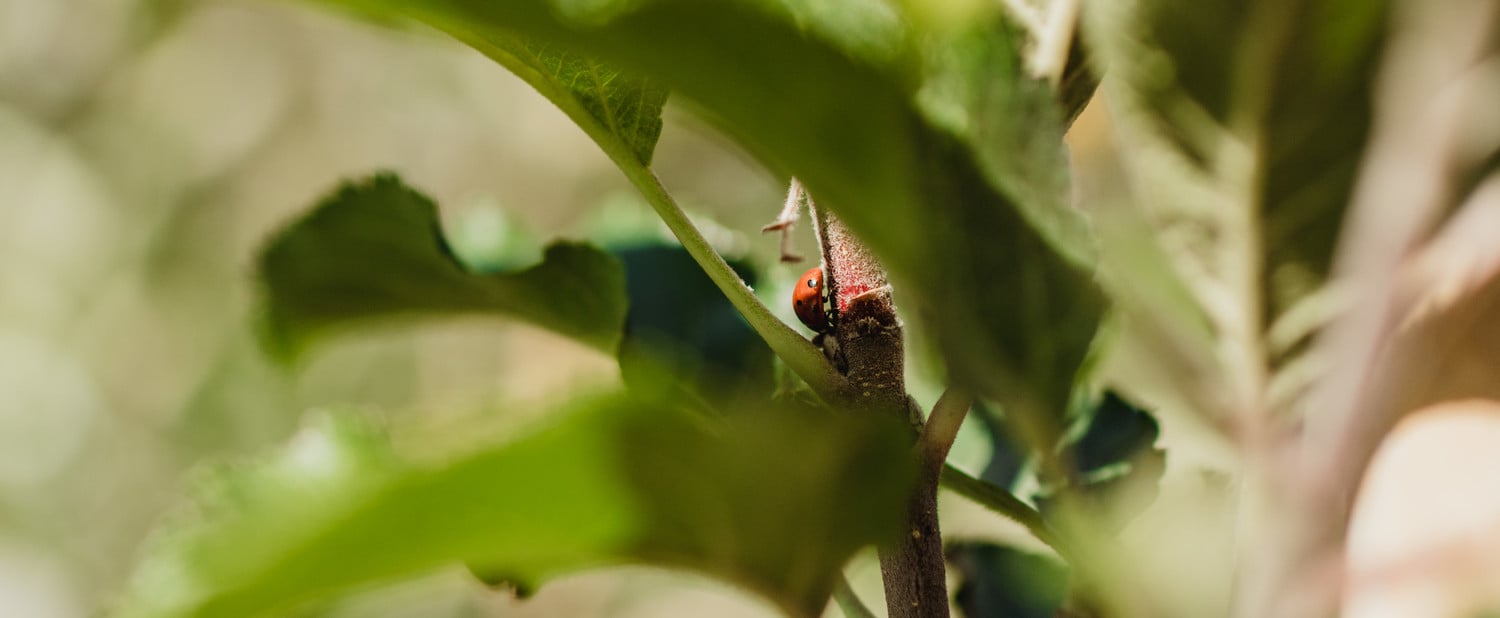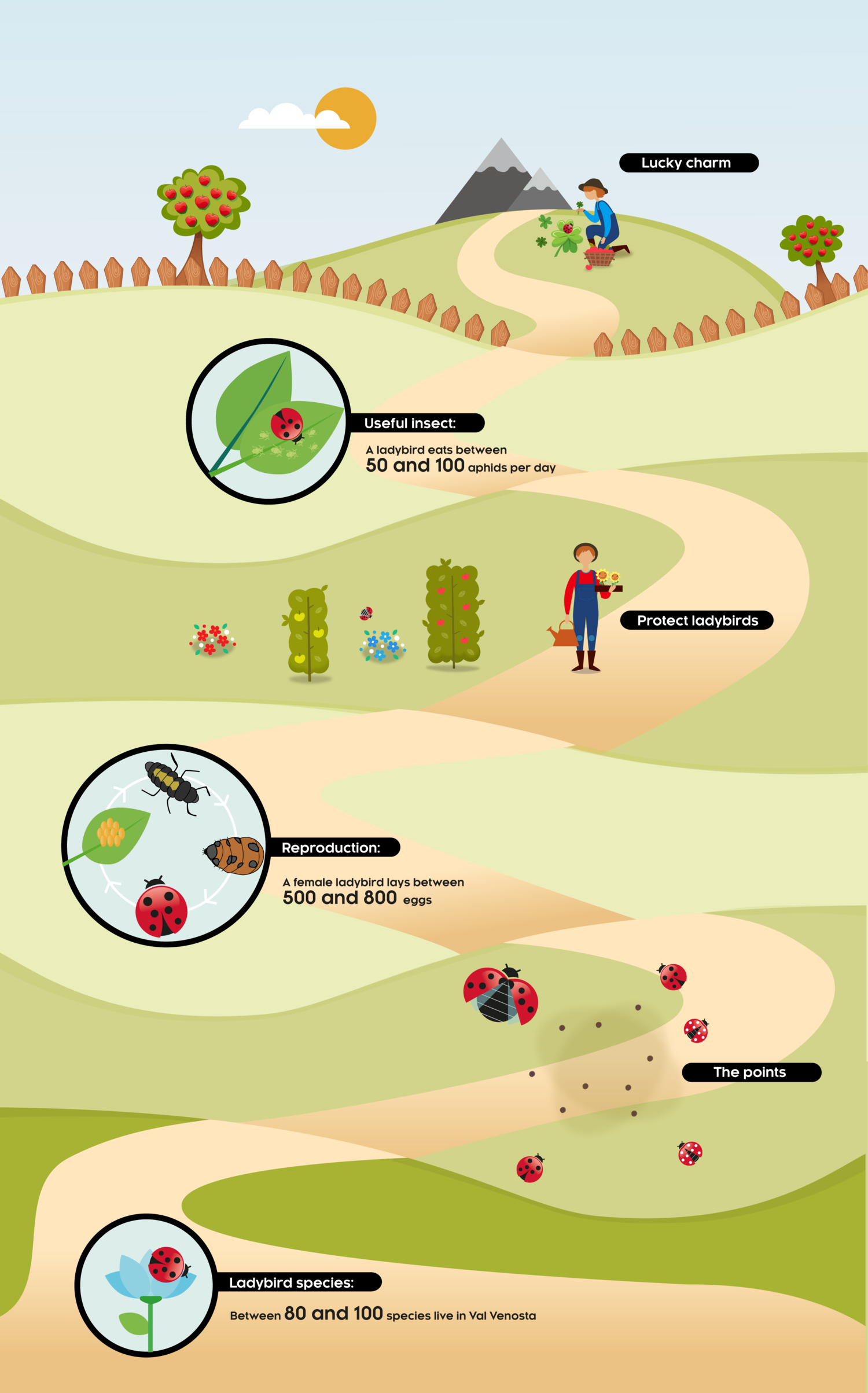
Why we have chosen ladybirds
for our brand
The more the better: If you have many ladybirds in your orchard, you have already won. And not just because of the many spots. These cute insects are indispensable in the fight against pests and for natural fruit-growing. This is why they can decorate our logo and proudly represent our brand. Learn everything about our mascot and you will be amazed!






